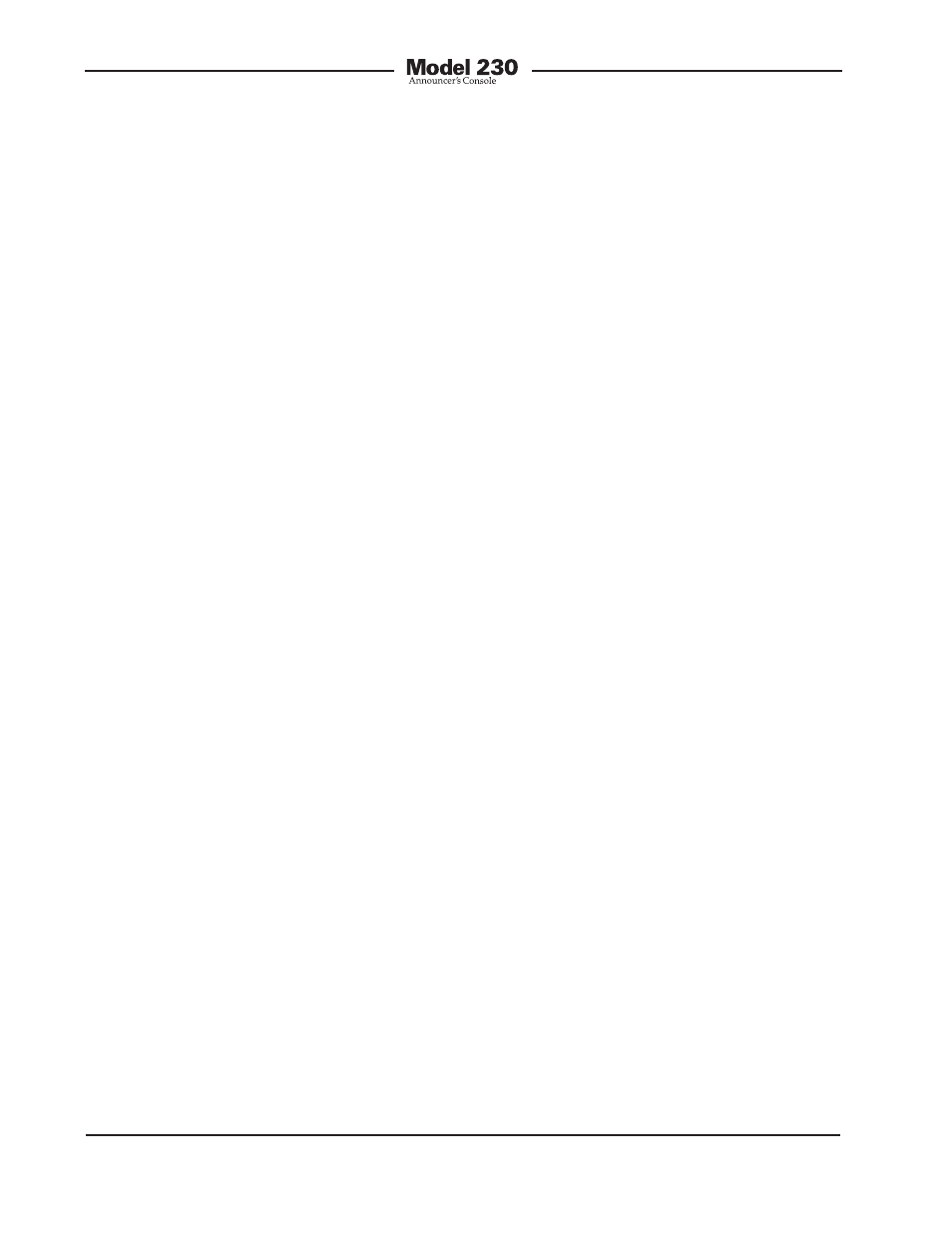Connecting line-level audio to the ifb input, Additional connectors – Studio Technologies 230 2014 User Manual
Page 40

Issue 9, November 2014
Model 230 User Guide
Page 40
Studio Technologies, Inc.
Connecting Line-Level Audio
to the IFB Input
In “emergency” situations it’s possible to
connect line-level audio signals directly
to the Model 230’s IFB input connector.
This can be successfully done as long as
several limitations are taken into account.
The first limitation is that the 10 k ohm
input circuit presents an unbalanced load
to the source. In most cases this shouldn’t
pose a problem. If a balanced intercon-
nection scheme must be maintained an
in-line isolation transformer can be used.
A second limitation is that the audio level
presented to pin 2 (IFB channel 1) must
not exceed 0 dBu or signal “clipping” may
occur. Prepare a 3-pin male XLR con-
nector so that the line-level audio source
designated as IFB channel 1 is connected
with signal high on pin 2 and low/shield
on pin 1. The audio source designated as
IFB channel 2 should be connected with
signal high on pin 3 and low/shield on pin
1. With this connection scheme the nomi-
nal input level is –10 dBu, the same as
with an IFB circuit. This may require that
an external attenuator (“pad”) be used to
reduce the level of the connected signal.
As expected, powering the Model 230 in
this scenario will require an intercom line
or external source of 24 volt DC to be
connected.
Additional Connectors
Three spare connector locations are
provided on the Model 230’s back panel.
From the factory they contain blank plates
that can be readily removed and replaced
with a variety of XLR connectors. These
spare connector locations are specifically
included so that a Model 230 can be cus-
tomized to meet the many specific needs
that arise in broadcast and related audio
applications. Expected uses for these loca-
tions include adding a 5-, 6-, or 7-pin XLR
connector to allow direct connection of
a broadcast headset. Other uses include
creating “loop through” or “mult” functions
for the line-level talkback output, IFB input,
or intercom interface connections.
The spare connector locations are compat-
ible with the Neutrik DL-series of connec-
tors. For flexibility, versions are available
that provide from three to seven contacts.
For example, a compatible 3-pin female
connector would be Neutrik part num-
ber NC3FD-L-1. To support headsets the
NC6FDS-L-1 is often used. This is a 6-pin
female connector with the unique Switch-
craft 6-pin arrangement. The hardware that
secures the blank plates to the Model 230’s
back panel is also intended to secure the
replacement connectors.
If connectors are added to the Model
230’s spare connector locations adding
labels to those connectors can be helpful.
For a great look it is recommended that
Brother® P-Touch ¼-inch (6 mm) labels be
created. Tape material that prints white text
on a black background works out well for
the Model 230. The Brother label cassette
number TX-3151, white on black, is appro-
priate for use with many of their printers.
In addition to the spare connector loca-
tions on the back panel, provision has
been made to allow easy interconnection
with the Model 230’s printed-circuit-board-
mounted input and output connectors. This
was accomplished by including numerous
3-position male “header” connectors on
the Model 230’s circuit board. These head-
ers, on 0.1-inch centers, are wired in paral-
lel with the Model 230’s connectors. This
“no solder” solution makes customizing
a Model 230 a simple process. The head-
ers, located on the Model 230’s printed
